Baiyang Lake
Baiyang Lake/Anxin Baiyangdian Scenic Area is located in the central part of Hebei Province. Anxin Baiyangdian is the largest inland lake in Hebei Province, with a total area of 366 square kilometers. It is located in the hinterland of Beijing, Tianjin and Hebei Province. It is 189 kilometers from Shijiazhuang in the south, 162 kilometers from Beijing in the north and 155 kilometers from Tianjin in the east.
Anxin Baiyangdian Scenic Area is a national AAAAA-level tourist attraction. It has been famous for its rich products and beautiful scenery since ancient times. It is known as "fighting gold by the day" and "autumn by the four seasons". It praises "the southern part of the northern country", sings "the land of fish and rice", and President Jiang Zemin wrote his own inscription: "Pearl Baiyangdian of North China".
In January 2017, the National Development and Reform Commission issued the National Red Tourism Classic Scenic Spots List, and Anxin Baiyangdian Scenic Spot was selected as the Chinese Red Tourism Classic Scenic Spots List.
Baiyangdian Scenic Area in Anxin has a long history. As early as the Neolithic Age, there were human activities in the West and south of the area (Liucun and Liangzhuang in Anxin County today).
During the Spring and Autumn Period and the Warring States Period, Dian District was under the jurisdiction of Yan and Zhao, bounded by the Great Wall of Yishui (North Dike of Jinanxin County), and Nange City (Jinanzhou Town) was under the jurisdiction of Zhao and Beihun Nicheng (Jinanxin Town) to Yan. So today Dian District has the theory of "Yannan Zhaobei".
In the Song Dynasty, He Chengzhong built dikes to store water in the Dian District, where Yang Yanzhao, a famous general of the Northern Song Dynasty, once stationed troops to resist Liao.
Liu Ying, a great Confucian of the Yuan Dynasty, taught in Santai and Anzhou, Dian District.
In 1517, the Yangcun River burst in the upper reaches of Baiyangdian Water District, forming the trend of nine rivers entering the lake. Its momentum is like "Wang Yang is vast and boundless in the sky", so it is renamed Baiyangdian.
In 2001, Baiyangdian Scenic Area was rated as national 4A level scenic area.
In 2002, it was listed as a Wetland Nature Reserve in Hebei Province. In 2005, it was listed as one of the top ten red tourist attractions in China.
On May 8, 2007, the Baiyangdian Scenic Spot in Anxin was appraised as the 5A Scenic Spot by the National Tourist Administration's Quality Grade Assessment Committee.
Eighty-five percent of the water in Baiyangdian is in Anxin County, Baoding City, so the scenic spot is called Anxin Baiyangdian scenic spot.
Anxin Baiyangdian Scenic Area is located in the central part of Hebei Province. It is under the jurisdiction of five counties, Anxin, Xiong, Rongcheng, Gaoyang and Renqiu of Cangzhou City. It covers a total area of 366 square kilometers. The water area is the only part of ancient Baiyangdian Lake. The upstream Jiuhe, Jilong, Xiaoyi, Tang, Fuhe, Caohe, Pinghe, Yangcun River and waterfalls are located in the upper reaches of Anxin Baiyangdian Lake. River and Baigou River, the water village of Xiatongjin Gate, Zeguo. Geographical coordinates are 38 44'- 38 59', 115 45'- 116 26'.
Anxin Baiyangdian scenic area is located in the low-lying area of Shandong River * Yongding River alluvial fan and the alluvial fan of the Tuotuohe river. It is a large lake with perennial water in the North China Plain. The river flows from west to East, forming a fan shaped river network from south to north, forming a natural depression. The lake is mainly composed of 143 lakes of varying sizes, such as Baiyangdian, Mapengdian, Burning Chedian and Zaoju Dian, and more than 3700 trenches. There are lakes in the lake, trenches are connected, and the distribution of fields and water surface is special.
The landform of Baiyangdian Scenic Area in Anxin is formed by the repeated evolution of lakes from sea to lake. The water structure of Baiyangdian is unique. It is different from both the inland lakes in southern China and the artificial reservoirs in northern China. It is not a connected ocean, but is connected by several rivers. Thus, the rivers and lakes are connected, and the lotus ponds of Ludang are scattered all over the place. The lakes and lakes are not only separated but also connected with each other.
Baiyangdian Scenic Spot in Anxin is a temperate continental monsoon climate with distinct characteristics of continental climate and four distinct seasons. It is dry and windy in spring, hot and rainy in summer, cool in autumn and cold and little snow in winter. The average temperature is 12.1 degree C, sunshine is 2638.3 hours and frost-free period is 203 days. The average precipitation is 5522.7 mm.
"Ga Zi Impression" is a large outdoor sitcom in Baiyangdian Red Tourism Project. The play is based on the familiar anti-Japanese stories about the small soldiers Zhang Ga and Yanling Team. It presents an ornamental scene against the background of the times when Yanling Team ambushed Japanese aggressors, a battle group active in Baiyangdian during the Anti-Japanese War. Drama. In addition to traitors, Duangang Tower, ambush and other plots, there are also characters in Gazi, Luo Jinbao and other movies.
Legend has it that a long time ago, on a Mid-Autumn night, Chang'e fairy stole some fairy medicines and left the Moon Palace uncontrollably. At the moment when she was about to fall into the world, she woke up suddenly. This surprise was very small. The treasure mirror fell into the world and fell into 143 pieces, forming 143 lakes now.
In 2000, Baiyangdian Tourist Terminal, the largest inland tourist terminal in northern China, was built in Anxin Baiyangdian Scenic Area. It is 317 meters long and covers 91 mu. It has 60 berths and can berth 600 vessels at the same time. At the same time, tourist service centers have been set up, including ticketing hall, tourist lounge, film and television hall, special crowd service office, tour guide service consultation office, multimedia screen, etc. They also provide free travel consultation, brochure, tour guide map, Baiyangdian tour guide guide, mobile phone charging, drinking water and other services.
In addition, the scenic spot has built the largest area in North China, covering more than 70 mu, high-standard ecological parking lot and three five-star tourist toilets with complete functions and high-grade facilities. The whole scenic spot is beautified, greened and purified. At present, Baiyangdian has more than 200 hotels and restaurants, with daily reception capacity of more than 15,000 people.
Famous specialty products
Salted duck eggs, cold lotus leaf buds, Baiyangdian prawns, tea-striped pine eggs, stewed fish in firewood pot, reed painting, lotus leaf tea, fried fish in pot, Baiyangdian River crab, cabbage.

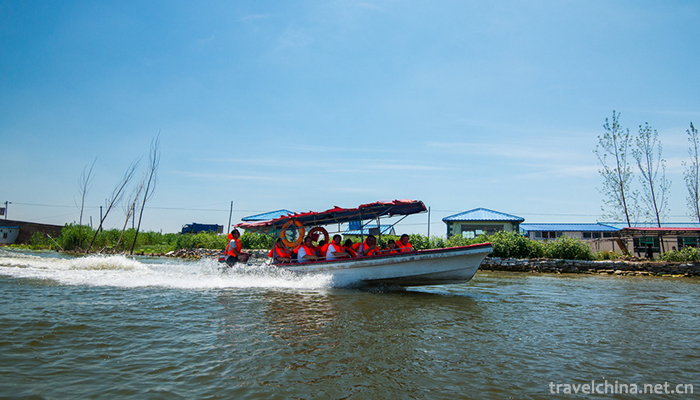
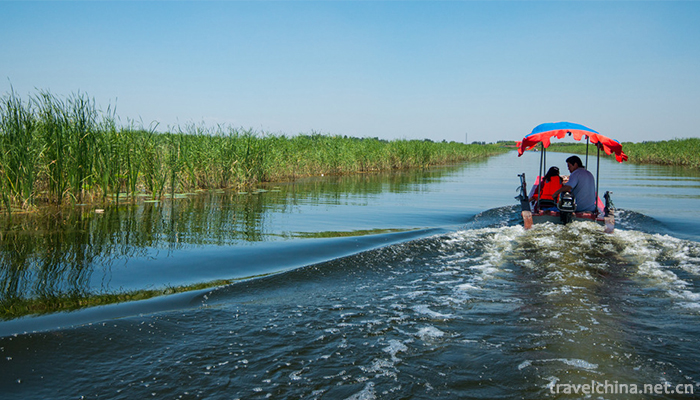

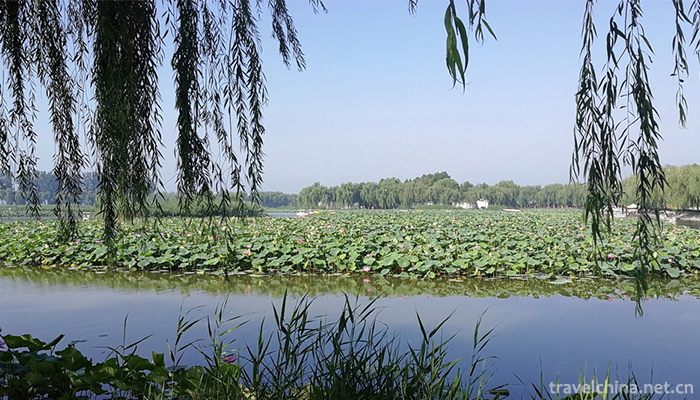

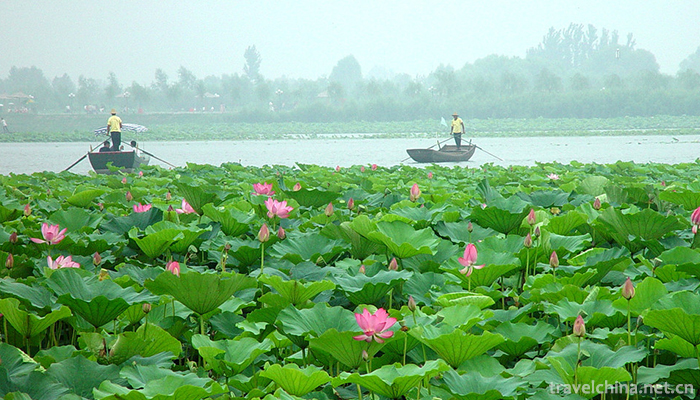
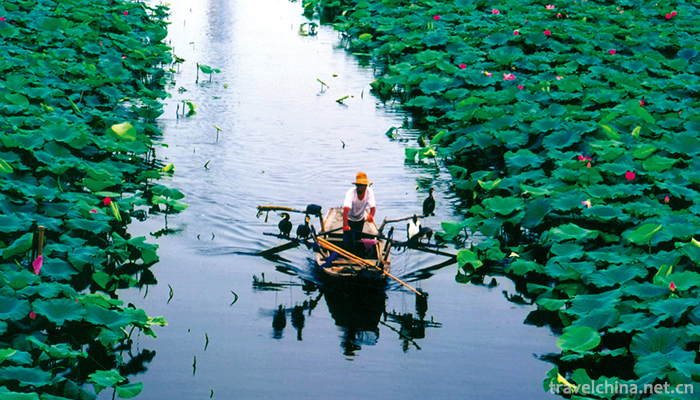

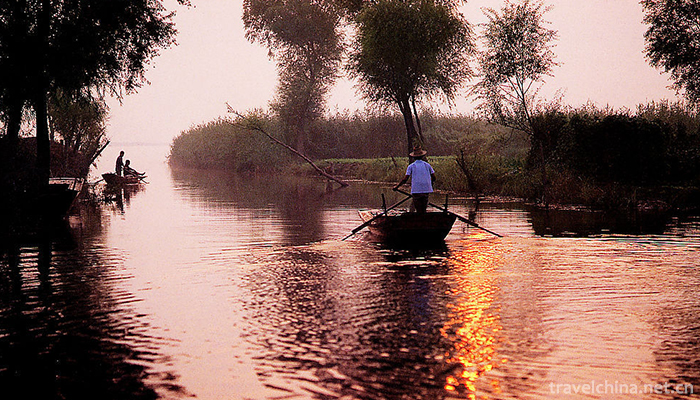



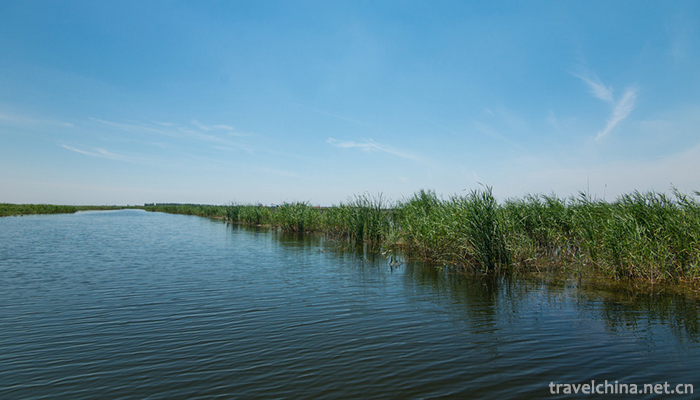

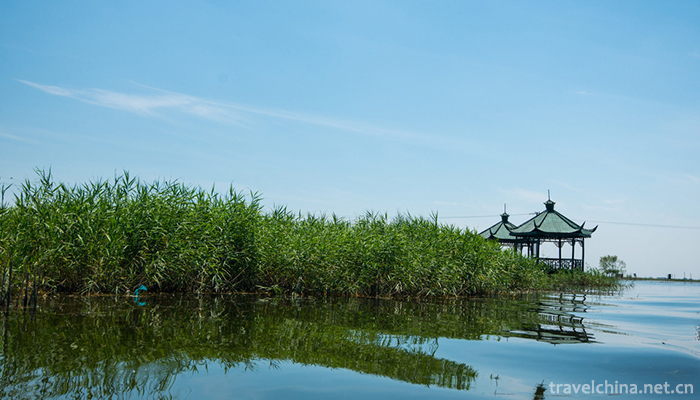
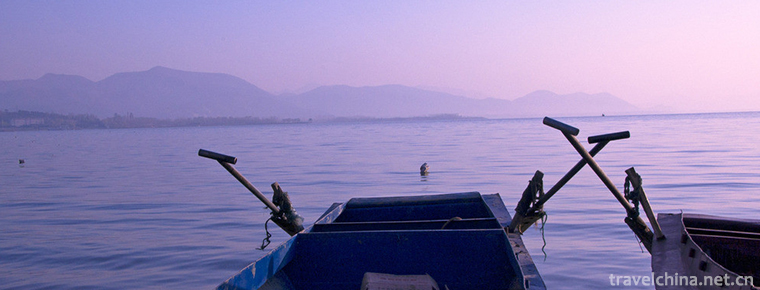
-
1.Mount Song
Songshan, known as the "foreign side" in ancient times, Xia and Shang Dynasties as "lofty" and "Chongshan", Western Zhou Dynasty as "Yue Shan", Songshan as the
Time 2018-10-30 -
2.Sweet potato porridge
Main ingredients for food ingredients: 250 grams of fresh sweet potato, 150 grams of Japonica rice, a number of red dates, and a proper amount of sesame seeds
Time 2018-11-02 -
3.Heilongjiang Science and Technology Museum
Heilongjiang Science and Technology Museum is located in Sun Island Science and Technology Park of Harbin City, which is a ship-shaped building sailing
Time 2018-12-08 -
4.Tangjiahe Scenic Area
Tangjiahe Scenic Area is located in Qingchuan County, Guangyuan City, Sichuan Province. Subtropical monsoon climate. National AAAA-level tourist attractions. Established in 1978, it covers a total are
Time 2019-02-13 -
5.Tone tune
Colour tune, commonly known as tune, colour tune, colour lantern, Na Hao Hey and so on, is one of the local operas in Guangxi. It belongs to the system of Lantern opera
Time 2019-04-04 -
6.Kirgiz hawk taming custom
Originating in the East, the Falcon has a history of 4000 years. The custom of taming Eagles has been handed down orally without any written records. However, the Kirgiz people have kept the saying
Time 2019-05-09 -
7.Kuozi Guzi
Guzi, also known as "Guzi Dance" and "Cowskin Boat Dance", is a unique folk dance of two groups of Junba in Chabalang Village, Qushui County, Tibet Autonomous Region. In 2008
Time 2019-05-10 -
8.Lanxi stall spring
Lanxi Spring Spring Spring Spring is an ancient form of sitting and singing art, which was formed and popular in Lanxi area in the Midwest of Zhejiang Province, Jinhua and Quzhou, and belongs to Nanci
Time 2019-05-10 -
9.Linxia brick carving
Linxia brick carving (also known as Hezhou brick carving) is a practical art closely combined with buildings. Linxia brick carving matured in the Ming and Qing dynasties, and in modern times it absorb
Time 2019-05-13 -
10.Sichuan Police College
Sichuan Police College is the only full-time undergraduate college of political, legal and public security in Sichuan Province, which is sponsored by the People's Government of Sichuan Province and jo
Time 2019-08-31 -
11.Dagu Glacier
Dagu iceberg scenic area is located in Heishui County, Aba Tibetan and Qiang Autonomous Prefecture, Sichuan Province, China, 102.44.15-102.52.46 E and 32.12.30-32.17.06 n, which is a rare modern mountain glacier.
Time 2020-11-07 -
12.Social undertakings in Luzhou
As of the end of 2018, Luzhou has added 1 provincial key laboratory, 1 provincial engineering technology research center, 4 incubators of science and technology enterprises above the provincial level, and 16 national high-tech enterprises. The annual output value of high-tech reached 38
Time 2020-12-14